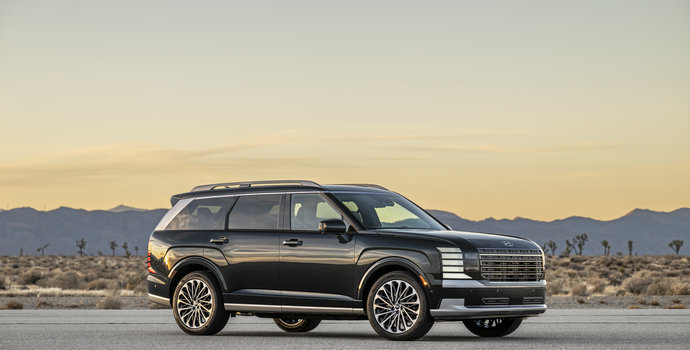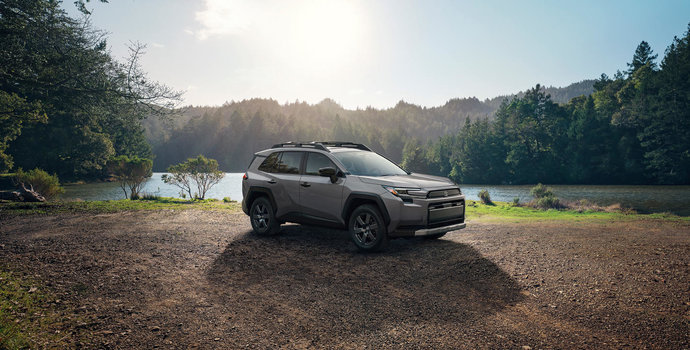Original Publication Date: May 16, 2023
Updated: May 14, 2025
Leasing a vehicle remains a popular option for drivers in Ontario, offering the flexibility of driving a new car every few years without the full financial commitment of buying. However, many car shoppers still find the lease payment calculation process confusing. If you're trying to determine whether leasing is right for you, understanding how payments are calculated—and what you can do to reduce them—is essential.
This comprehensive and updated guide will walk you through how lease payments are calculated, what each term means, and how various choices affect your monthly cost. We’ll also include a new FAQ section at the end to help clarify the process even further for today’s Ontario car buyer.
The Core Formula: Selling Price, Residual Value, and Depreciation
At its most basic level, a car lease payment covers depreciation, interest charges, and taxes. Here's how it works:
- The Selling Price is the negotiated price of the vehicle before taxes and fees.
- The Residual Value is what the car is estimated to be worth at the end of the lease.
- The Depreciation is the difference between the Selling Price and Residual Value—this is the portion you’re financing with your lease payments.
Example Calculation:
If the car you lease has a negotiated price of $36,000 and is expected to be worth $20,000 at the end of the lease, then:
- Depreciation = $36,000 - $20,000 = $16,000
- You are paying that $16,000 over the length of the lease, plus interest and taxes.
Selling Price vs. MSRP: Why Negotiation Matters

Many assume the lease calculation is based on the MSRP (Manufacturer’s Suggested Retail Price), but that’s not the case. The Selling Price—the price you negotiate with the dealer—is what really matters.
- MSRP is the sticker price and starting point for negotiations.
- Selling Price is what you agree to pay and can include discounts, dealer incentives, loyalty programs, or manufacturer rebates.
Negotiating a lower Selling Price directly lowers the amount of depreciation you need to cover, reducing your monthly lease payment. This is a key area where being an informed shopper can save you money.
Understanding Residual Value and Depreciation
The Residual Value is predetermined by the leasing company based on how well a particular model retains value. It’s typically expressed as a percentage of the MSRP. For example, a vehicle with a 50% residual value after three years will have half its original MSRP value at the end of the lease.
Depreciation is the amount the vehicle loses in value over the lease term. It’s the single largest factor affecting your lease payments.
What Affects Residual Value?
- Brand reputation and historical resale value
- Model reliability and maintenance record
- Projected demand at lease-end
- Lease term length and annual kilometre allowance
Vehicles like the Toyota RAV4 or Honda CR-V tend to have strong residual values, which helps keep monthly lease payments lower.
Down Payments and Trade-Ins: Should You Put Money Down?
While it’s possible to lease a car with zero down, many lessees choose to reduce monthly payments by putting money down.
- Capitalized Cost Reduction is the official term for a down payment on a lease.
- The more you put down, the less you finance through your monthly payments.
- However, down payments are not refundable, even if the vehicle is stolen or totalled early in the lease.
A trade-in can be applied in the same way. If your current car has positive equity, that value can be used to reduce the total lease cost, lowering the payment amount and the taxes owed.
If you’re leasing in Ontario and have a car to trade, the dealership can apply your trade-in value toward the new lease, reducing both the capitalized cost and the tax burden.
Lease Term Length: How Many Months Should You Lease?
Typical lease terms range from 24 to 60 months, with 36 or 48 months being the most common. The term length affects your payments in two ways:
- Longer lease = lower monthly payments, since the depreciation is spread out over more months.
- Shorter lease = less overall depreciation, potentially saving you money over time.
Caution: If the lease term exceeds the warranty period, you could be responsible for maintenance and repairs in the final year(s). Be sure to understand how the manufacturer’s warranty aligns with your lease term.
How Kilometre Limits Influence Lease Costs

Most Ontario leases include 16,000 to 24,000 kilometres per year. If you go over the agreed limit, you’ll pay an overage fee, typically around $0.10 to $0.25 per kilometre.
When leasing, you must estimate your usage honestly:
- City drivers in Toronto may easily stay within limits.
- Commuters in Vaughan, Oshawa, or Kitchener may exceed them.
Some leasing companies offer high-kilometre leases upfront, which is often cheaper than paying per-kilometre penalties later.
What Is a Money Factor and How Does Interest Work in a Lease?
Instead of quoting an interest rate, leasing companies use a money factor to calculate interest charges. This figure is usually expressed as a decimal (e.g., 0.0025). Multiply it by 2,400 to estimate the equivalent APR. So, a money factor of 0.0025 = 6% APR.
- This finance charge is added to your lease payment.
- Leasing companies may offer promotional rates on select models, especially at the end of a model year or during sales events.
Tip: Inquire about your lease’s money factor and negotiate if possible—just like you would a loan interest rate.
Security Deposits: Are They Mandatory?
Many leasing companies require a refundable security deposit, typically equal to one month’s payment. It covers:
- Missed payments
- Excess wear and tear
- Damage at lease-end
You’ll receive the deposit back if you meet all conditions at lease return. Some leasing companies in Ontario also offer Multiple Security Deposit (MSD) programs where you can make additional deposits to reduce your money factor (and therefore your monthly payments).
Taxes and Fees on a Lease in Ontario
In Ontario, you must pay 13% HST on lease payments. The tax is applied only to the monthly payment, not the full value of the vehicle. Other fees may include:
- Licensing and registration
- Air conditioning tax
- Tire stewardship fee
- Dealer documentation fees
Ask for a breakdown of all fees included in your payment before signing the contract.
End-of-Lease Charges and Options

When the lease ends, you’ll return the vehicle or choose to buy it at the residual value. However, there could be additional charges, such as:
- Excess wear and tear
- Over-kilometre penalties
- Disposition fee (typically $300–$500)
If the market value of the car is higher than the residual, you might consider buying it out and reselling it. This has been a popular tactic in recent years due to high used vehicle values.
Frequently Asked Questions About How Vehicle Leasing Works
How is a car lease payment calculated?
Lease payments are based primarily on the vehicle’s depreciation during the lease term, interest charges (money factor), and taxes. Depreciation is calculated by subtracting the residual value from the selling price. The monthly lease payment includes depreciation plus finance charges and applicable taxes and fees.
What is residual value?
The residual value is the predicted value of the vehicle at the end of the lease term. A higher residual value results in lower depreciation costs and typically lower monthly payments.
Is it better to make a down payment on a lease?
A down payment can reduce monthly payments but does not always lead to long-term savings. It is not refundable if the car is stolen or written off. You may be better off keeping the cash or applying a trade-in toward the lease instead.
Can I lease a car with bad credit in Ontario?
Yes, but approval and interest rates may vary. Leasing companies often look for stable income and a decent credit score. A higher security deposit or co-signer may be required for applicants with poor credit.
What happens if I drive more kilometres than allowed?
You’ll be charged a per-kilometre penalty at lease-end. Rates vary but typically range from $0.10 to $0.25 per excess kilometre. You may be able to purchase extra kilometres at the beginning of your lease at a reduced rate.
Can I end my lease early?
Ending a lease early usually results in early termination fees. Some dealers offer lease transfer programs where you can transfer the lease to another person, helping you avoid penalties.
Can I buy the car at the end of the lease?
Yes, this is called a lease buyout. You pay the predetermined residual value. This may be a good option if the market value of the car is higher than the residual.
Does leasing a vehicle in Ontario include tax on the full price?
No. In Ontario, you only pay HST on your monthly lease payment, not on the full value of the car.
Do I still need to pay for maintenance on a leased car?
Yes. You’re responsible for regular maintenance. If your lease term is shorter than the vehicle’s warranty, most repairs may be covered. But if the lease extends beyond warranty coverage, maintenance costs are your responsibility.
Conclusion
Leasing a vehicle in Ontario is an attractive option for drivers who want predictable payments, a new vehicle every few years, and minimal long-term commitment. By understanding the factors that determine lease payments—selling price, residual value, interest rates, kilometre limits, and lease term—you can make smarter decisions and potentially save hundreds over the life of your lease.
Whether you’re shopping for a compact sedan in downtown Toronto or leasing a rugged VUS in the GTA suburbs, this guide can help you navigate your next lease with confidence.








